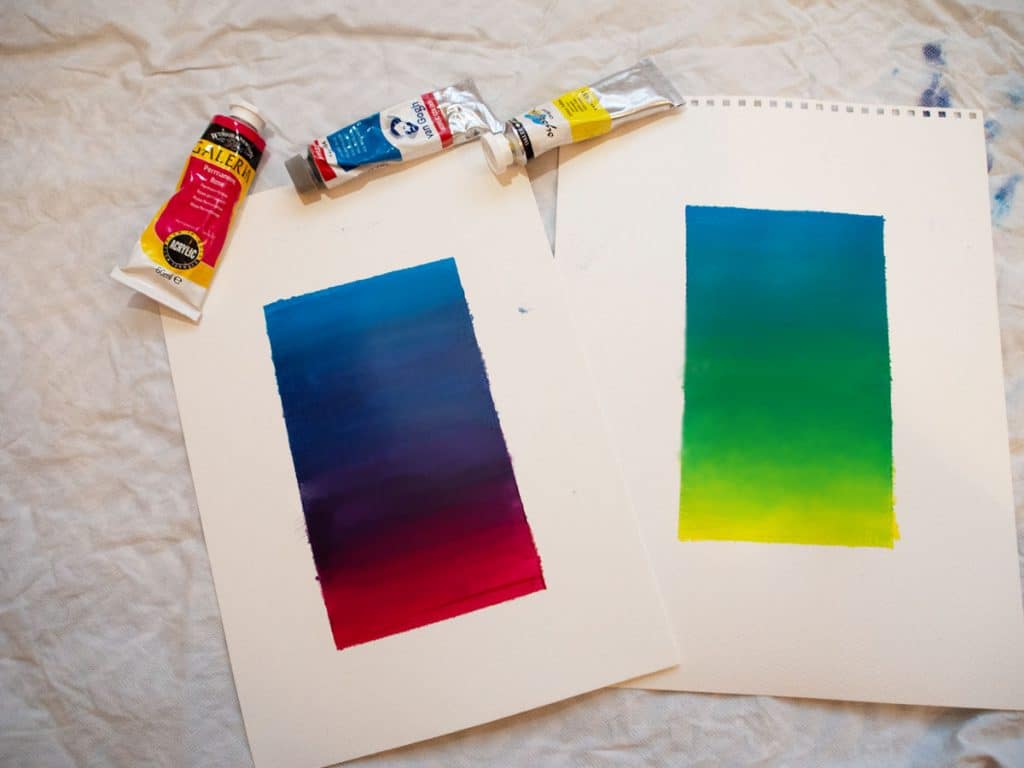Acrylic paint is a versatile medium that allows artists to explore a vast spectrum of colors and create captivating artworks.
One of the most exciting techniques to master in acrylic painting is color blending. Whether you’re a beginner or an experienced artist, understanding the principles of color blending will unlock endless possibilities for expressing your artistic vision.
In this article, we’ll delve into the fascinating world of color blending with acrylic paint, demystifying the process and offering valuable tips to enhance your skills.
Before we dive into the world of color blending, it’s essential to have a basic understanding of color theory. Primary colors, such as red, blue, and yellow, form the foundation of all other colors.

By mixing primary colors, you can create secondary colors, such as orange, green, and purple. Exploring the color wheel and familiarizing yourself with complementary, analogous, and triadic color schemes will provide a solid foundation for your color blending adventures.
To embark on your color blending journey, you’ll need a few key tools and materials. Firstly, gather a selection of high-quality acrylic paints in various colors. Look for brands known for their color vibrancy and blendability.
Additionally, acquire different sizes and shapes of brushes to experiment with different blending techniques. Lastly, have a palette or a mixing surface handy for blending colors and creating custom shades.
Blending Techniques to Try:
- Wet-on-Wet Technique: Apply a base layer of paint, then, while it’s still wet, introduce a second color into the mix. Use a brush or even your fingers to blend the colors together, creating smooth transitions and gradients.
- Layering Technique: Build up layers of translucent colors on top of each other. As you layer the paint, the colors will interact, resulting in unique blends and visual depth.
- Dry Brush Technique: Load a small amount of paint on a dry brush and gently brush it onto the canvas. This technique allows for controlled blending while preserving texture and brushstrokes.
- Glazing Technique: Apply thin, transparent layers of paint on top of a dry base layer. This method is excellent for creating subtle color variations and adding dimension to your artwork.
Studying the works of accomplished artists can provide inspiration and valuable insights into color blending techniques.

Here are a few renowned artists known for their mastery of color blending with acrylic paint:
- Mark Rothko: Rothko’s iconic color field paintings feature large areas of blended colors that evoke emotional responses. His skillful use of subtle transitions creates a sense of depth and contemplation.
- Helen Frankenthaler: Frankenthaler’s innovative “stain” technique involved pouring diluted paint onto unprimed canvas, allowing the colors to blend and interact organically. Her vibrant and ethereal works showcase the power of color blending in abstract expressionism.
- Gerhard Richter: Known for his diverse painting styles, Richter incorporates color blending to create stunning abstract and semi-abstract works. His ability to create seamless transitions and harmonious color combinations is awe-inspiring.
Color blending with acrylic paint opens up a world of possibilities for artistic expression. By understanding color theory, mastering various blending techniques, and drawing inspiration from accomplished artists, you can elevate your artwork and unleash your creativity.
Remember to experiment, embrace the unexpected, and let your imagination guide you as you embark on your color blending journey.
With practice and perseverance, you’ll develop a unique style that reflects your artistic voice. So, grab your brushes, mix those colors, and watch as your artworks come to life with the magic of color blending.






